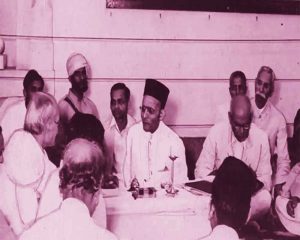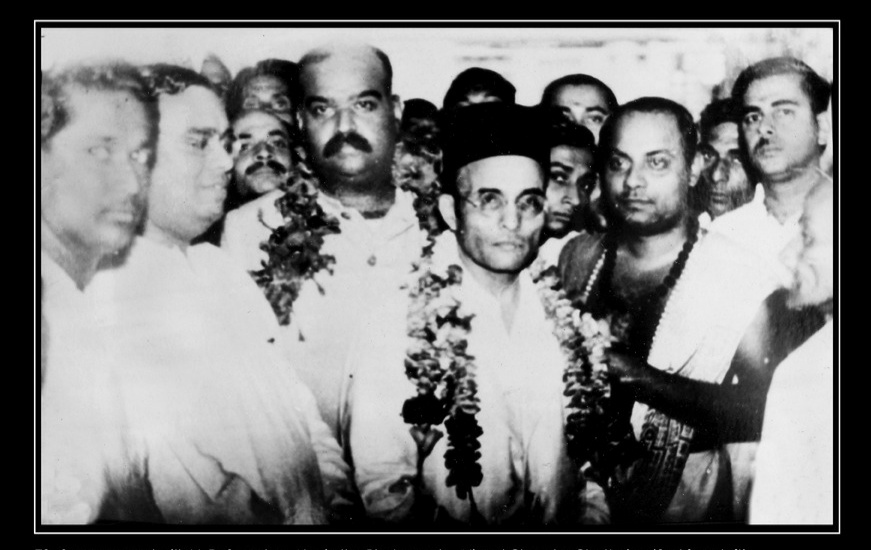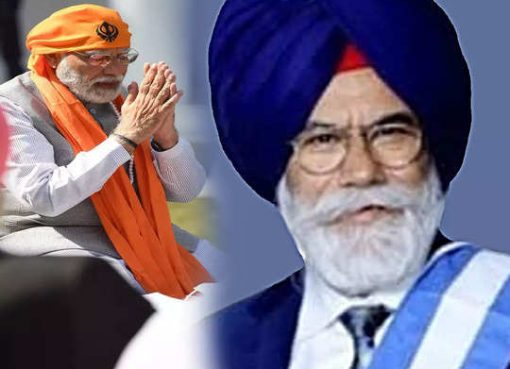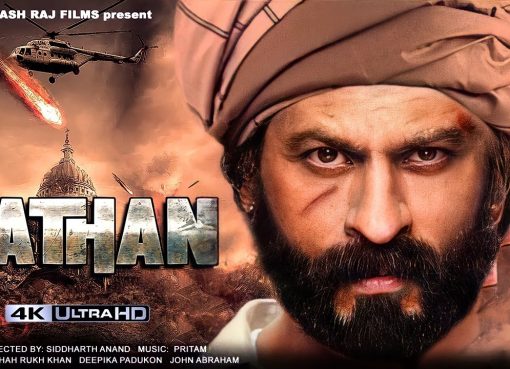-Sri Sukrit Banerjee
The 20th century, in the history of India as well as that of the world, will always be remembered as a tumultuous century of monumental shocks, catastrophic tragedies and glorious achievements. A century accomplished what couldn’t be achieved over a millennium; and this was particularly reflected in the growth of new worldviews and movements. One of these trends or movements would be, undoubtedly, Hindu Nationalism- a dormant force of Hindu consciousness and pride that exploded with a massive force in response to modernity. While its roots are as old as Hinduism itself; its specific emergence in the late 19th and early 20th century needs to be located in the context of the policies being followed by the colonial government and the challenges thrown up through the proselytization and political assertiveness shown by the two Abrahamic religions- Islam and Christianity. It is in response to such a situation of crisis and despondency that we see the emergence of an organization like the Hindu Mahasabha- an organization that represented the culmination or crystallization of the efforts of all the erstwhile Hindu organizations working in various fields, committed by the ideology of Hindu Nationalism. This essay, keeping in mind this context, would like to explore the rise of Hindu Mahasabha as a political force in India, its evolution in response to domestic and external stimuli; and finally, its sudden demise brought about by the indictment of the organization in the murder of MK Gandhi and the political developments that followed.
The roots of the Hindu Mahasabha go back to developments in the Bengal, Punjab and United Provinces of British India, in the period 1880-1920. During this period, the British Government began to follow an increasingly preferential policy towards the Muslims with regards to colonial education, employment and political representation; in a bid to counter the moderate nationalist movement that was developing under the leadership of the predominantly Hindu- run Indian National Congress. One example of this was the British effort to favour the Muslims in the Punjab by preventing Hindu moneylenders from acquiring land under the Land Alienation Act of 1901 and by restricting the Hindu elite’s access to administration. The Separate Electorates that were introduced through the Morley-Minto Reforms of 1909 gave Muslims the right to be elected only by their co-religionists; moreover, it gave them representation in the Central and Provincial Assemblies far in excess of their actual proportion in the population. This was in keeping with Sir Syed Ahmed Khan’s argument that the “Muslims were historically the former leaders of this country” and hence, should get privileged representation given their historical position. Syed Ahmad Khan represented the hegemony of the Ashraf Muslim class in UP; who dominated the provincial bureaucracy, education and law courts by virtue of the official promotion of Urdu and Persian. They were vociferously against introduction of universal adult franchise or “one man one vote” system in India. Even in the local municipal and district boards of Punjab, they began to dominate in excess of their numbers by virtue of economic and social hegemony. In Bengal, while the majority of the Muslim masses were poor; the few Muslim aristocrats that were there (like the Nawab of Dhaka) funded Wahabi and Faraizi Movement which led to the increase in fanaticism among the Muslim peasant masses.
The propaganda was so successful that not only did they refuse to participate in the anti-Partition agitation or Swadeshi Movement of 1905-08, but they actually committed massacres on the Hindu population in districts like Myemensingh and Jessore. The alarming increase in the Muslim population rate in Bengal and Punjab, where Muslims were already approaching majority, became a severe source of concern among the Hindus. In 1909,U.N. Mukherji wrote an essay that was serialised in the Bengalee of Surendranath Banerjea, entitled “Hindus: A Dying Race”. In a context where colonial enumeration techniques used religion as a category for counting population and used it to distribute representation and patronage; numbers assumed a seminal significance[1].
Several Hindu organizations had already emerged, by the end of the 19th century, to protect the socio-cultural, economic and even political interests of the Hindu community; in the light of the above-mentioned threats that Hindus were facing. Prominent among these were the Arya Samaj, Hindu Sabhas, Go Rakshini Sabhas and Nagari Pracharini Sabhas. All of them took up certain specific causes (like cow protection, Hindi promotion) or causes like the general socio-political mobilization of Hindus at the local level. The emerging Hindu middle class in the towns and cities, particularly the trading and service groups, joined hands with the traditional aristocrats in supporting such organizations. The aim of the Hindu Sabhas, in particular, was to wrest control of the municipalities and district/local boards from the dominant control of the Muslims. They sprang up in Punjab and UP mainly, and sought to use control of these local bodies to push forward Hindu interests.
The first Hindu Sabha was formed in Lahore on 4th August, 1906; representing the coming together of reformist Arya Samajis and conservative Sanatanis. Their aim was to protest against the government’s ‘pro-Muslim’ bias and ‘discrimination’; it also aimed to improve the ‘moral, intellectual and material condition of the Hindus’. This called for a new type of Hindu politics; and a series of Hindu Sabhas were established through the initiatives of local Arya Samajists in the cities of the Punjab. Lala Lajpat Rai, Lal Chand, Ruchi Ram Sahni, Ram Bhaj Datta, and Lala Hans Raj were the prominent leaders of this growing Hindu Sabha movement. Lala Lal Chand wrote an influential pamphlet, called “Self-Abnegation in Politics”, in the Punjabee newspaper published by Lajpat Rai. He called for Hindu unity and organization (Sanghatan) so that Hindus could fight to collectively preserve their interests. All these efforts bore fruit in the formation of the Punjab Hindu Sabha in 1909. Madan Mohan Malaviya presided over the Hindu Sabha’s first session in Lahore in October 1909[2].
The Punjab Hindu Sabha also organized a Punjab Provincial Hindu Conference in October, 1909. This Conference was presided over by Sir Pratul Chandra Chatterjee, a former Punjab High Court judge, Vice-Chancellor of the Punjab University and a patron of the Sanatan Dharma Sabha. The resolutions passed by their first conference concerned chiefly the promotion of Sanskrit and Hindi, support for cow protection and Ayurvedic medicine, and the writing of a history of India’s ‘Hindu period’. The image of a politically unified and organised Hindu community assumed critical importance in the Hindu Sabha’s political programme. The Sabha proposed the establishment of a broad all-India Hindu organisation, which would provide strength to Hindu politics in securing benefits for the Hindus at the provincial and local levels. As part of this plan, it held six Punjab Hindu conferences from 1909 to 1914 in Lahore, Amritsar, Delhi, Ambala and Ferozepur respectively[3].
Simultaneously, we see the emergence of Hindu Sabhas in several cities of United Provinces. This drew upon the pre-existing tradition of agitation for cow protection and Nagari promotion- Hindu revivalist causes which were being spearheaded by a host of local organizations which were well entrenched and organized in the UP cities by 1900. Here, the initiative was taken by Madan Mohan Malaviya; and his efforts bore fruit when the Hindu Sabhas of UP began to coordinate with the Punjab Hindu Sabha. He even established the Hindu University Society in 1912, drawing together the local Hindu Sabhas, the result of which was the establishment of the Benaras Hindu University in 1915. Ultimately, it was through his initiative, that the Ambala session of the Punjab Hindu Sabha passed a resolution calling for establishment of a pan-Indian body to represent Hindu interests, in the Haridwar Kumbh of 1915. This objective was finally realized when in April 1915, during the Kumbh in Haridwar, the All-India Conference of Hindus was convened; where the Sarvadeshak Hindu Sabha – the All-India Hindu Sabha – was finally established as an official body. MK Gandhi and Swami Shraddhananda, who were among the speakers at the Kumbh Mela conference, strongly supported the formation of the Hindu Sabha. Maharaja Munindra Chandra Nandi of Kasimbazar was the President of the conference[4].
The All-India Hindu Sabha laid particular stress on Hindu solidarity and the need for social reform without identifying itself with ‘any particular sect or sects of the Hindu community’. A reference to ‘Hindu political interests’ was made in the Sabha’s constitution, but only in passing in the sixth and last clause of the ‘Aims’. A Subjects Committee passed a series of rules for the new organisation and defined its goals as[5]:
- to promote greater ‘union and solidarity’ of the Hindus as ‘one organic whole’.
- to promote education among members of the Hindu community.
- to ameliorate and improve the condition of all classes of the Hindu community.
- to protect and promote Hindu interests ‘whenever and wherever it may be necessary.
- to promote good feelings between the Hindus and other communities in India and to act in a friendly way with them and in ‘loyal co-operation with the government’.
- to take steps for promoting ‘religious, moral, educational, social and political interests’ of the community.
In the initial years, the Sarvadeshak Hindu Sabha-renamed as the Hindu Mahasabha in 1921-remained an ineffective body. The local organizations based on which it grew up were more active, particularly in the Home Rule Agitation in 1916-18. It was in this time that Indian politics saw the meteoric rise of Mohandas Karamchand Gandhi, particularly through the Anti-Rowlatt Bill Agitation and the Non-Cooperation Movement. The Hindu Mahasabha had an ambivalent stand towards these movements. On one hand, individual leaders of the organization like Swami Shraddhanand and Lala Lajpat Rai enthusiastically participated in the movement. On the other hand, Madan Mohan Malaviya was of the opinion that boycott of schools, colleges, law courts and councils was a very ridiculous step; he instead advocated that Hindus should participate in the institutional process to protect their interests. This state of confusion would have continued for a long time had it not been for the Khilafat Movement[6].
The Khilafat Movement, calling for the reinstatement of the Ottoman Khalif in Constantinople as the religious head of the Islamic World, was in its very conception a pan-Islamic agenda. It aroused extra-territorial loyalties among Indian Muslims by invoking religious symbolism. Gandhi wanted to channelize this anti-British sentiment (as the British were the ones to effect changes through the Treaty of Sevres) into his own Non-Cooperation Movement, to unite Hindus and Muslims on a common platform. The experiment was a disaster to say the least. It ignited the fire of pan-Islamism to such an extent that soon anti-British chants got replaced by calls to establish a “Dar-ul-Islam” in India and finish off the Kaffirs (read Hindus). The manifestation of this was seen during the massacre of Hindus in Kerala by the Moplah Muslims, and in the subsequent genocides of Hindus that followed (Kahuta, Gulbarga, Kolkata, Pabna, etc.). Practices like cow slaughter and loud Muharram processions became a sign of political assertion by the Muslims, exhibiting their power over the public space. What made this worse was the silence maintained by Gandhi, and even a tacit endorsement of these things by blaming the Hindus; who had apparently stoked the fire according to him. Nothing makes this more explicit than the tragicomic way in which Gandhi tried to make a statement on Swami Shraddhanand’s murder by a Muslim fanatic. The Congress became more and more conciliatory towards the Muslims with each act of assertiveness by the community[7].
It was in context of such a situation that the Hindu Mahasabha found a new lease of life. The organization was revamped and restructured, and a new beginning was heralded through the Gaya session of 1922 (over which Malaviya presided). The Mahasabha now formally adopted and advocated the concept of “Sanghatan”- unity and organization of Hindus into one community-in order to protect Hindu interests and Hindus themselves. The two pillars of Sanghatan were Suddhi and abolition of untouchability. “Suddhi” was aimed at bringing back into the Hindu fold Muslims and Christians whose ancestors had converted to those religions by a purification ceremony. Abolition of untouchability was aimed at uniting all sections of the Hindu community and ensuring nobody felt left out. Swami Sharddhanand, V.D. Savarkar and many others made stellar contributions in this regard. Swamiji himself was credited with the conversion of 60,000 Rajput in West UP. Unfortunately, Swamiji was killed in the hands of a Muslim fanatic because of this campaign, but the work continued. Hindus also started vigorously taking up campaigns against cow slaughter and started playing music before mosques, as a counter response to prevent monopolisation of the public space[8].
This was also the time when we see the emergence of Rashtriya Swayamsevak Sangh, a socio-cultural organization with the aim to work for Hindu unity and organization. Unlike the Mahasabha, however; its political character was subdued. It was more in the nature of a volunteer organization where cadres were given martial training and discipline, inspired in the values of nationalism and made to imbibe and inculcate Hindu philosophy and culture. It was formed in 1925 with Dr KB Hegdewar as its first President. Prominent Mahasabha leaders like BS Moonje were present on the occasion of its establishment on the Vijay Dashami of 1925, and Madan Mohan Malaviya even offered from them the premises of BHU as a recruitment and operating ground. They became particularly active in the Central Provinces and Bombay Presidency. Even though the Hindu Mahasabha later formed its own volunteer militias in the form of the Ram Sena and Hindu Raksha Dal, the RSS continued as the unofficial volunteer arm of the Mahasabha and continued to provide it with leaders and cadres[9].
The ideal of martial power became very crucial during this time, as reflected in the above-mentioned developments. VD Savarkar was the major exponent of this philosophy, and comprehensively described it through the ideology of “Hindutva”. In his book, he defined Hindus as a “nation” bound by ties of common geography, common blood and common culture. In his opinion, territorial commonality was necessary but not sufficient to create nationalist consciousness; what was needed was a feeling of regarding the country as both “Pitribhu” (Fatherland) and “Punyabhu” (Holy Land). Muslims and Christians, by this definition, were excluded from the “nation”- while Buddhists, Jains, Sikhs were included in this category. Muslims and Christians, however, could be made to undergo inculturation and hence bring them back to their “original home”[10]. This idea informed the Suddhi movement in the first place. The idea of martial prowess was driven by the very need to protect this nation against its enemies. It was felt that emasculated men had to be made men of steel body and sturdy character- so as to enable them to carry on this sacred duty. As a result, emphasis was now placed on military training and martial arts, because of which we see rifle associations, clubs and Akhadas coming up in the Northern parts of the country.
The Mahasabha during this time was still not a full-fledged political party. It was treated in wide parlance as a socio-cultural organization that acted as a pressure group within the Congress. This is evident in the fact that there were common leaders in both the organizations; particularly people like Lala Lajpat Rai. Madan Mohan Malaviya, Gauri Shankar Mishra, Sampoornanand, etc. The local branches were almost indistinguishable in North Indian towns, particularly in UP. Both organizations lent cadres and organizational space to each other. Muslim leaders like Shaukat Ali rued that the Congress had been “taken over by the Mahasabha”. However, the growing adoption of the “secular” rhetoric by the Congress and its increasing espousal of “territorial nationalism” started distancing the two from each other. In 1926, for example, Malaviya fielded candidates against the Motilal Nehru faction of UP Congress in the local body and Provincial Elections, and managed to defeat the Nehru faction. The pro-Malaviya candidates were obviously sympathetic to the Mahasabha[11].
The rift over the communal question became even wider with the Nehru Report of 1928. The Mahasabha practically forced the Congress to adopt a Plan that would exclude any possibility for special benefits to Muslims, at the cost of Hindus. The Congress, however, quickly distanced itself from the Report and started fresh discussions on the communal question; which angered the Mahasabha further. Nothing came out of the Round Table Conferences. While Malaviya and Lajpat Rai were conciliatory towards the Congress, the subsequent Presidents like BS Moonje or Bhai Parmanand were not. The growing opposition of the Mahasabha to Congress policies finally lead to a resolution being adopted in the Haripura Session of Congress in 1938, which categorically excluded members of the Congress from becoming members of either the Hindu Mahasabha or the Muslim League. The performance of the Congress in the 1937 elections could have contributed to such a confident posture by the Congress[12].
 It was this moment that led to the emergence of the Hindu Mahasabha as a full-fledged political party. VD Savarkar announced a new beginning by taking the position of President in 1939. It was at this time that the movement expanded beyond its original base in the Hindi heartland and embraced Maharashtra and Bengal. Stellar leaders like Shyamaprasad Mukherjee entered the Mahasabha at this juncture. This was also the time when the Second World War broke out.
It was this moment that led to the emergence of the Hindu Mahasabha as a full-fledged political party. VD Savarkar announced a new beginning by taking the position of President in 1939. It was at this time that the movement expanded beyond its original base in the Hindi heartland and embraced Maharashtra and Bengal. Stellar leaders like Shyamaprasad Mukherjee entered the Mahasabha at this juncture. This was also the time when the Second World War broke out.
[1]Bapu, Prabhu Narain; “Constructing Nation and History: Hindu Mahasabha in Colonial North India 1915-1930”; PhD Thesis; School of Oriental and African Studies; Nov 2009; pg. 13-18
[2]Ibid; pg. 11-13, 18-19
[3]Ibid; pg. 19-21
[4]Ibid; pg. 21-25
[5]Ibid; pg. 24
[6]Ibid; pg. 25-28
[7]Sampath, Vikram; “Savarkar: A Contested Legacy 1924-1966”; Penguin Books; 2021; “Communal Cauldron” (Ch. 3); pg. 94-126
[8]Ibid; “Caste in Stone” (Ch.2)
[9]Bapu, Prabhu Narain; “Constructing Nation and History”; pg. 99-112
[10]Ibid; pg. 66-79
[11]Ibid; pg. 148-162
[12]Ibid; pg. 163-183
(Author: Sri Sukrit Banerjee, at the moment, is pursuing MA in History from JNU. Originally hailing from the city of Kolkata, Sri Banerjee is interested in a host of subjects, Indic civilization in particular)
(to be continued…..)







[…] (Read the First Part) […]